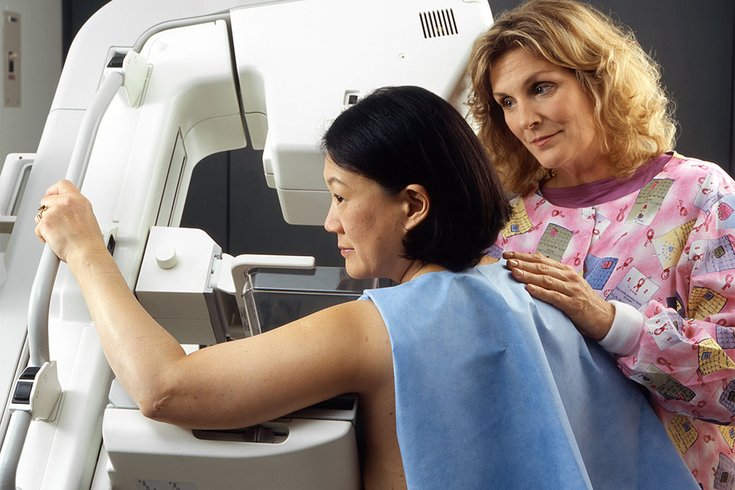
March 28, 2019
 Rhoda Baer / National Cancer Institute/via wikimedia
Rhoda Baer / National Cancer Institute/via wikimedia
A woman undergoes a mammogram.
The U.S. Food and Drug Administration announced proposed changes to mammography standards Wednesday.
Under the updated policy, mammogram providers would have to tell women if they have a common risk factor for breast cancer, among other things.
These changes to the regulation, aimed at improving quality and modernizing breast cancer screening, are the first in more than 20 years, FDA Commissioner Dr. Scott Gottlieb said.
RELATED READ: FDA panel to review safety of breast implants this week
Among the proposed changes, the policy would require mammography providers to inform patients who undergo the breast cancer screening test if they have dense breast tissue, which may both warp the results of a mammogram by obscuring signs of cancer, and increase the risk of developing breast cancer in the first place.
Patients would be given the information in a post-screening summary letter, along with advice about future care, the statement says. According to TIME, only 40 states currently require providers to give patients information on breast density — the policy change hopes to standardize the sharing of personal risks nationwide.
Mammograms of dense breasts are known to be more difficult to read and interpret. "The dense tissue can obscure signs of breast cancer and lower the sensitivity of the image," according to the FDA. Dense breasts are also known to be a risk factor for breast cancer. More than half of women over age 40 have dense breasts, according to the agency.ss
Time reported:
While the FDA called the policy part of an effort to “modernize breast cancer screening and help empower patients,” it is likely to be met with pushback from some doctors. More than half of women over 40 have dense breasts, according to the FDA, and not everyone with this common condition has the same risk of cancer, research has shown.
These policy changes reflect advances in mammography technology since the current regulations were written.
According to CNN:
For example, 3D digital screening can provide cross-sectional images of the breast from multiple angles. The result is an "informed image" of the breast tissue, which is preferred for some patients over traditional 2D imaging.
The proposed changes move to strengthen the agency’s ability to revoke and suspend operations at mammography screening facilities that are violating regulations.
The American Cancer Society recommends mammograms every year between the ages of 45 and 54 and every other year after that for as long as a woman is in good health and expected to live another 10 years. Women younger than 45 should be given the choice to start annual mammograms, the cancer society says.
There is a 90-day public comment period for the proposed changes, which will be followed by changes based on the comments. Then it will be reviewed before it becomes final.